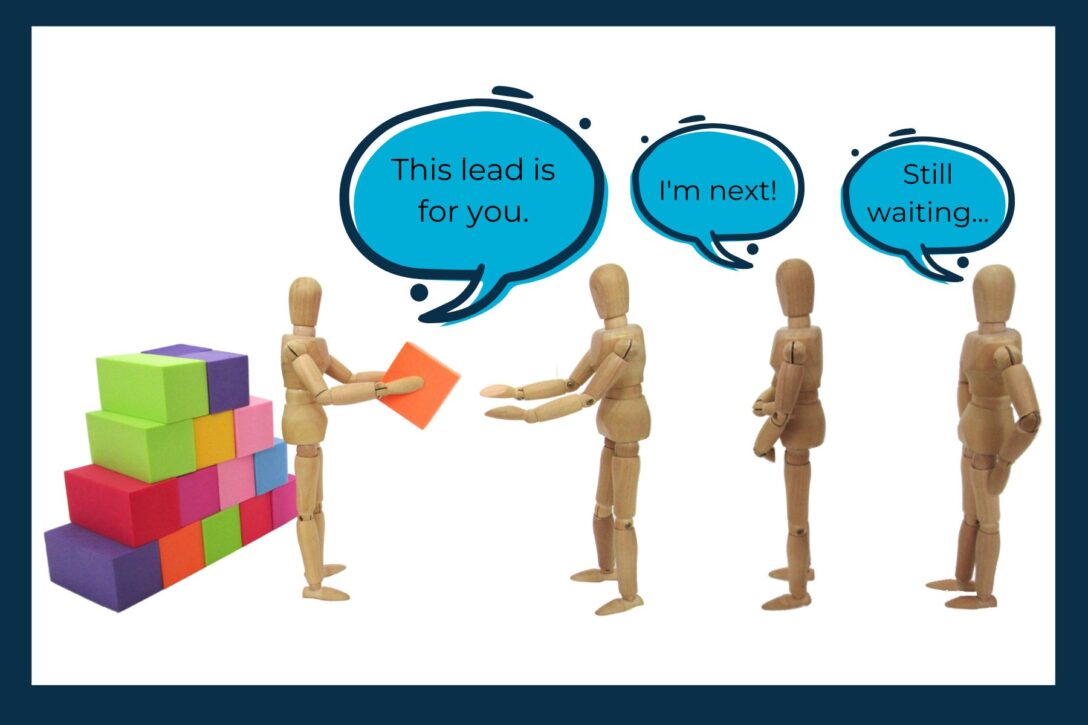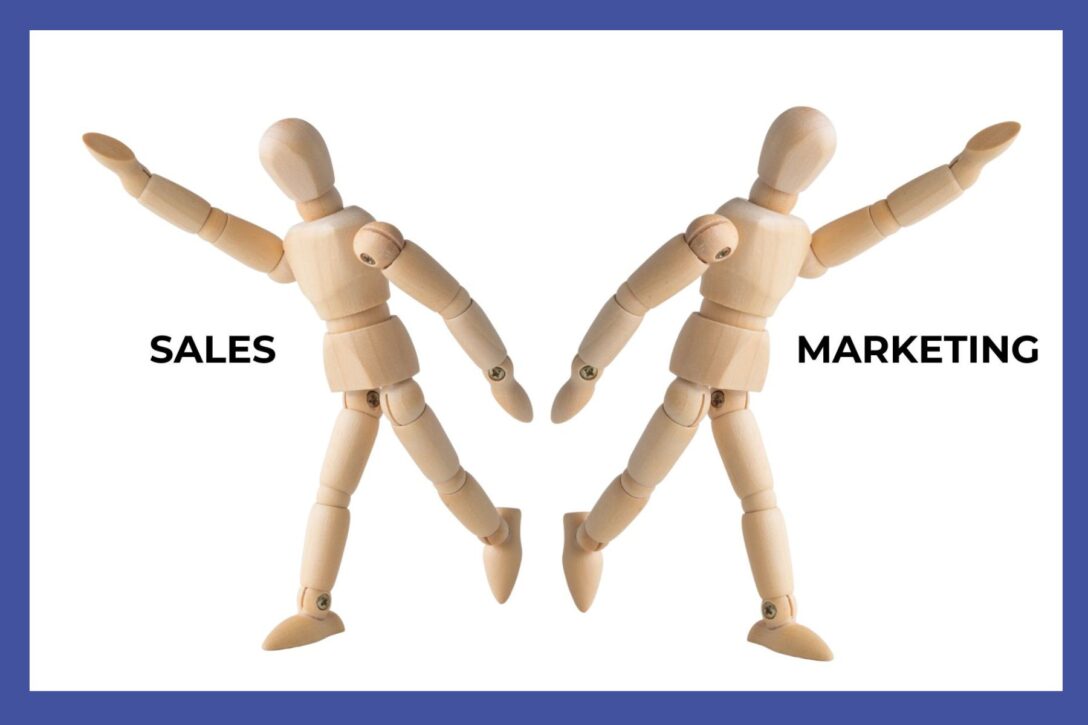The following article is a guest post from Greg Poirier, Revenue Operations Leader and CEO of CloudKettle.

Reaching Today’s B2B Buyer First
Speed to lead is the time it takes for a human to contact a lead after some sort of “moment,” be it an ebook download, contact-us form or response to an online ad. It’s a critical KPI in Sales because the faster a lead is contacted, the more likely they are to convert into a paying customer.
To put it differently, today’s buyer is fickle. They’re typically doing a significant amount of research and looking into your competitors. If you don’t strike while the iron is hot, well… somebody else will.
There are common challenges that businesses face when trying to optimize their speed to lead. Primarily, it can be difficult to balance the streamlining of automation to deliver the lead faster, while still fulfilling key business process requirements.
Although this can be frustrating, by implementing best practices and focusing on iterative improvements, businesses can increase their sales performance and ultimately revenue.
Let’s take a look at common challenges and their potential impact on organizations.
Challenge #1: Lack of Automated Lead Distribution Systems
For organizations with extremely long lead times, the culprit is often an inefficiency in lead distribution. In the worst case scenarios, it is actually done by hand. But in others, it is simply a process that is slow, involves complex custom code within Salesforce, or is at least partially manual. For example, the leads are routed to an SDR, but a large number have to then be routed to an AE because the SDR wasn’t the right recipient.

Generally, the root cause is that the organization does not have an enterprise record routing and matching solution like LeanData in place. Often organizations believe “our process is too complicated, it has to be done by hand.”
My usual response is that it can’t possibly be more complex than that of our clients with multiple product lines across multiple countries with team members who speak a variety of languages. A solution like LeanData can handle any of that complexity that is thrown at it, and quickly.
Alternatively, we sometimes see the “requirement” that a human is involved to ensure proper routing. The majority of the time, this is really a lack of willingness by key stakeholders to burn down an old, outdated distribution process and start from scratch in a way that is more equitable and efficient.
Challenge #2: Weak or Non-existent Lead Scoring
A critical component of speed to lead is knowing when a Lead should be passed and then passing it appropriately. Many organizations aren’t doing Lead scoring properly (or even doing it at all) and every single lead gets routed.
When this happens, there’s little incentive for Sales team members to actually follow up with leads because the majority of leads are “garbage.” Most are simply not ready to buy yet.

Instead of the “route it all” approach, scoring should be happening within the Marketing Automation Platform. It should be determined what is and isn’t a Marketing Qualified Lead. Then only the MQLs should be passed through to the Sales Team.
The actual configuration of the lead scoring should be determined based on the data. Marketing Operations should look into the data around which leads have closed previously and use that information to create a scoring model.
Having a sound model for creating MQLs means that the leads that are passed to Sales will be of higher quality. That way, the Sales team is more likely to follow up with them efficiently.
Challenge #3: Poor Communication Between Sales and Marketing
As with many elements of a successful business, communication is key. The onus is on Marketing Operations to handle training and change management around how lead scoring works and what constitutes an MQL.

Sales people need to understand the process and why they should work MQLs. On the other hand, Sales people need to take action on Leads. Or, Sales should let the Marketing team know if and when there are issues or trends they’re seeing with the quality of the leads.
This is not a one-and-done situation, but an ongoing effort to continuously build trust. Having open lines of communication also gives Sales a chance to give feedback and ask questions if they need clarification. This ultimately improves the overall success of the organization.
Challenge #4: Inaccurate or Partial Information
There are multiple points at which a Lead should be enriched. In a perfect world, all Leads should be enriched and qualified directly within the Marketing Automation platform, before they even get to the CRM.
Depending on the sophistication of your Marketing Ops/Sales Ops environment enrichment could take place:
- Pre-form fill (pre-enrichment)
- Form submission (company size, etc.)
- When record is create in Salesforce
- A weekly/monthly re-enrichment automated process to catch changing data (for example, if a person is no longer with a company)
The pre-enrichment and enrichment within the Marketing Automation tool will have a direct impact on speed to lead. This ensures the lead is fully scored and ready to be routed when it hits the CRM. While the record creation and re-enrichment processes will also ensure that the Sales team has the most up-to-date, accurate information to inform their Sales calls.
Challenge #5: Inefficient Sales Processes
The maturity of your model will depend on the size and scale of your company. A smaller organization may have a fairly basic routing process (eg: all leads go to an SDR unless it’s a named account and then they go to an AE).
But a more sophisticated organization will likely have multiple layers of routing. If the Sales Process is not well defined, this will result in delays in lead assignment.
Similarly, if there is limited enrichment and team members are manually entering information into your CRM, this will result in a more time-consuming process. This will also open up more opportunities for errors. Subsequently, this situation impacts the speed with which Sales is reaching out to Leads.
Speed to Lead Solutions: Location and Time-Based Routing
A lead routing solution should take into account the fact that different teams may be spread across time zones and will be available at different hours. If you have SDRs/AEs that operate in multiple languages, it should also consider the preferred language of Lead/form submitter. For example, look at default language in browser. This may sometimes override and ignore other things.
Finally, a lead routing solution should also consider that people go on breaks and take vacations. Further, people may be otherwise unavailable for periods of time. There should be dependencies in place so a Lead does not get assigned and sit idle for days (or weeks).

No Silver Bullets in Speed to Lead
With Speed to Lead challenges, there are no silver bullets. It is a battle won inch by inch and yard by yard. Best-in-class organizations are responding to Leads in minutes and measure incremental performance improvements in seconds.
Overcoming any one of the challenges listed above can make positive contributions to those incremental improvements. And ultimately, these add up to big wins over time.










